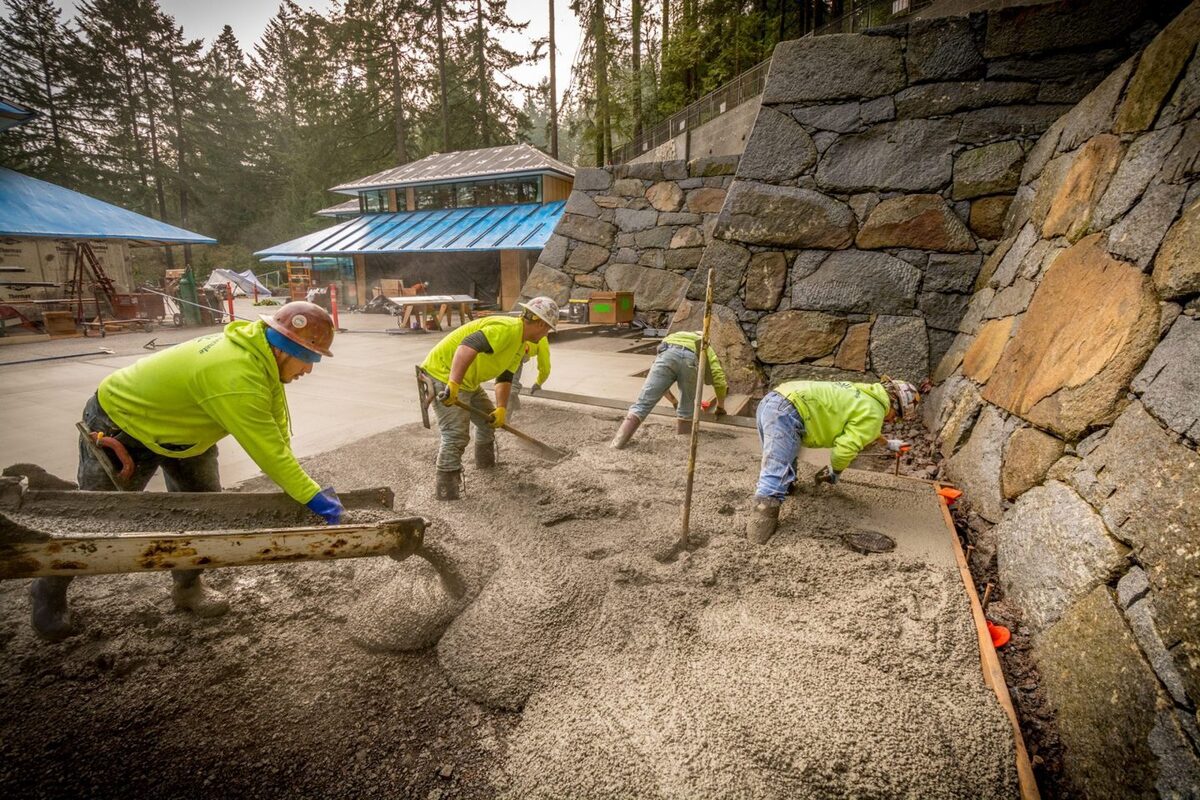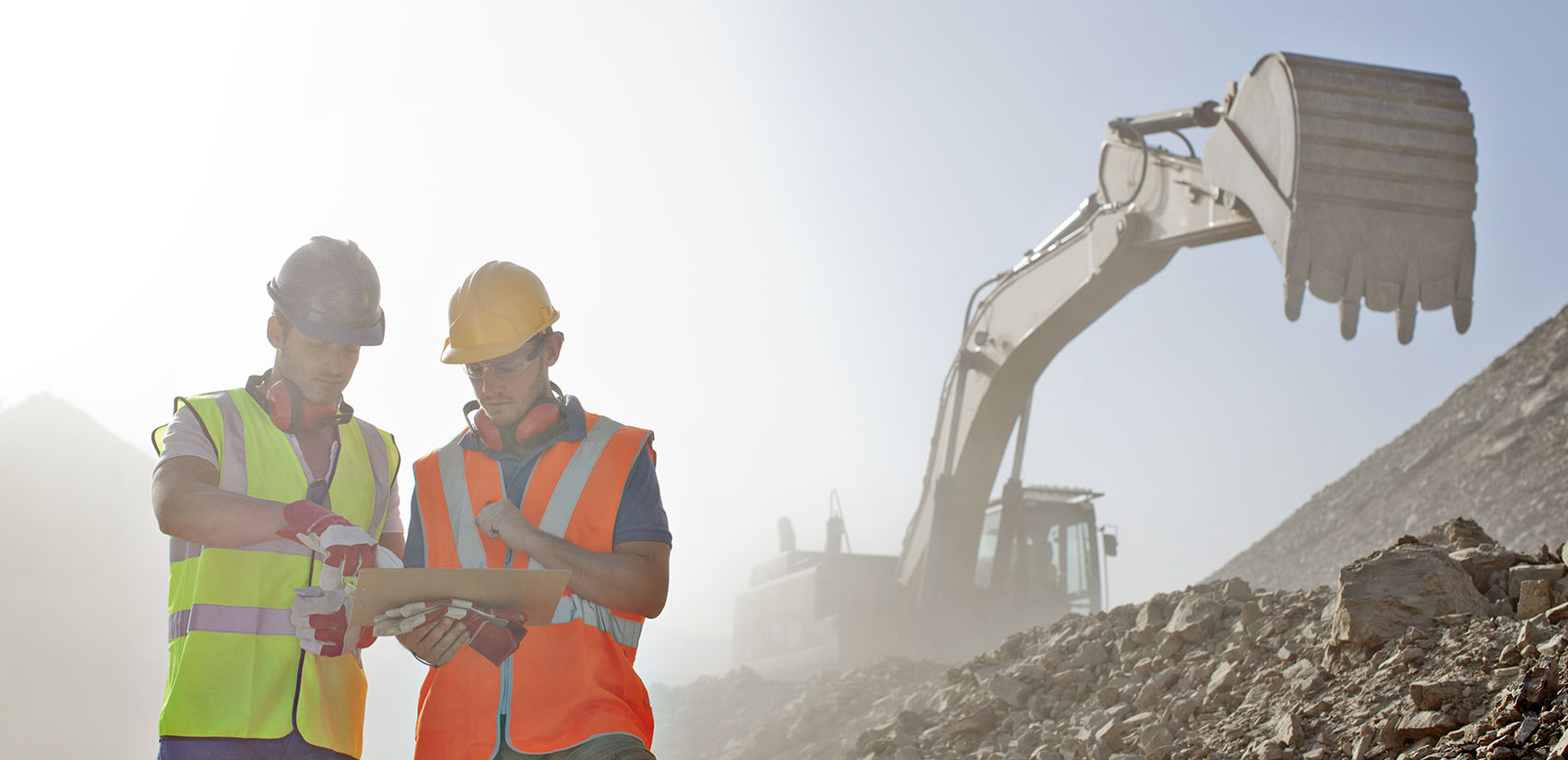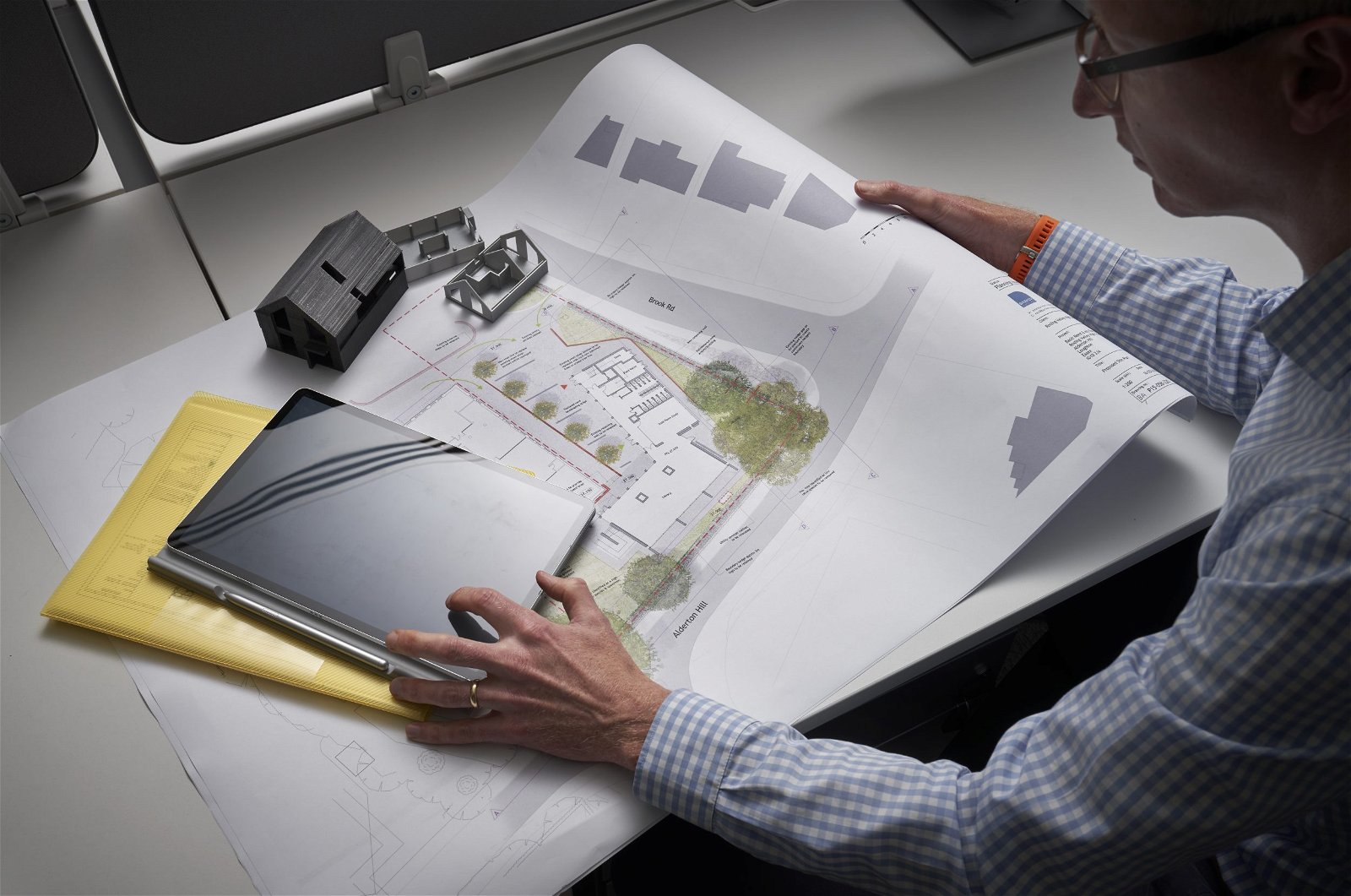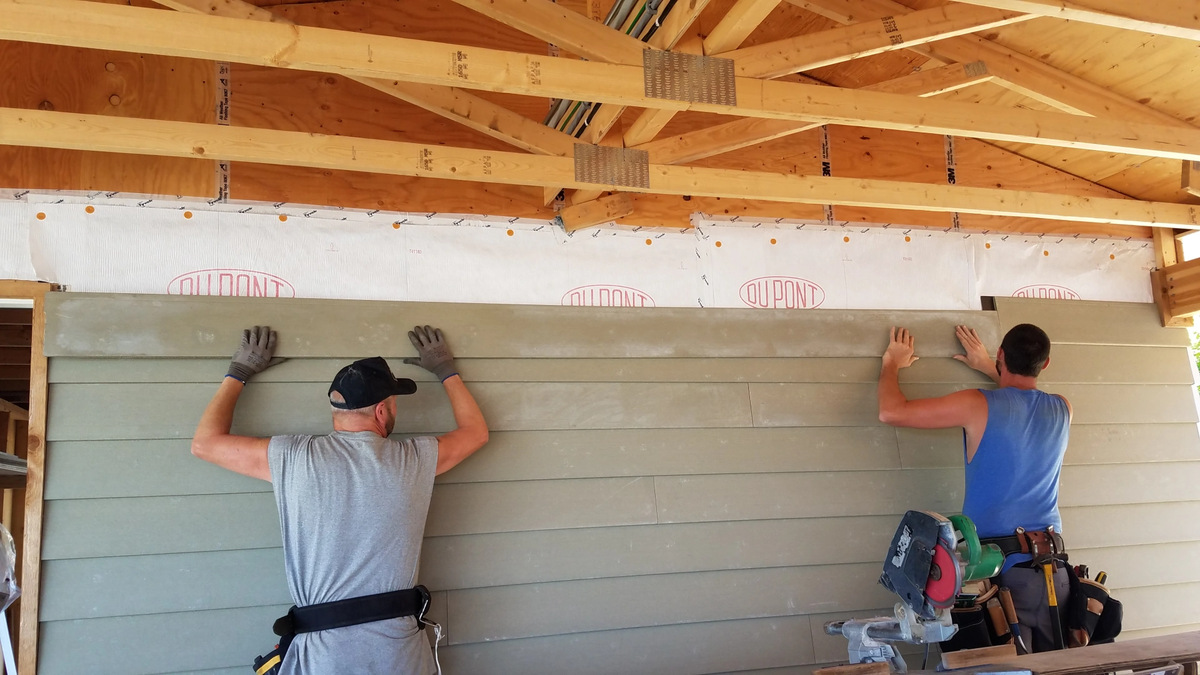Home>diy>Building & Construction>What Is The Hardest Construction Job


Building & Construction
What Is The Hardest Construction Job
Modified: January 24, 2024
Discover the toughest challenges in the building construction industry and find out what makes it the hardest construction job. Gain insights and valuable tips from experts in the field.
(Many of the links in this article redirect to a specific reviewed product. Your purchase of these products through affiliate links helps to generate commission for Storables.com, at no extra cost. Learn more)
Introduction
Construction is a demanding industry that requires skilled professionals to tackle various tasks. From erecting high-rise buildings to repairing infrastructure, construction workers face numerous challenges on a daily basis. However, there are certain jobs within the industry that are considered especially difficult due to the physical demands, extreme conditions, and complex nature of the work.
In this article, we will explore some of the hardest construction jobs that require exceptional skill, strength, and resilience. These highly specialized roles push the limits of what is physically and mentally possible, showcasing the dedication and expertise of the individuals who take on these challenges.
So, without further ado, let’s dive into the world of the toughest construction jobs and discover the remarkable individuals who excel in these fields.
Key Takeaways:
- The construction industry is home to a diverse range of challenging jobs, from working at dizzying heights as a structural ironworker to diving underwater for essential tasks. Each role demands exceptional skill, resilience, and dedication.
- Skilled construction professionals, from hazardous material removal workers to blasters and drillers, play vital roles in shaping our built environment. Their expertise, physical strength, and commitment to safety are essential for the success of construction projects.
Read more: What Is The Highest-Paid Construction Job
Structural Ironworkers
When it comes to working at great heights and dealing with heavy steel beams, structural ironworkers are truly a cut above the rest. These skilled professionals are responsible for erecting the skeletal framework of buildings, bridges, and other large structures.
The job of a structural ironworker involves assembling and connecting steel beams, columns, and girders according to detailed blueprints. This requires precise measurements, careful calculations, and exceptional coordination. Ironworkers often work from elevated platforms, relying on harnesses and safety equipment to ensure their safety as they navigate the heights.
Working as a structural ironworker is physically demanding, as the job entails lifting and maneuvering heavy pieces of steel. The work also requires a high level of strength and agility, as ironworkers often have to climb and balance on narrow beams while carrying out their tasks.
In addition to the physical challenges, ironworkers often face adverse weather conditions, such as extreme heat or freezing temperatures. They may also encounter dangerous situations, such as working near live electrical wires or using welding equipment in confined spaces.
Despite the demanding nature of the work, structural ironworkers play a vital role in shaping our built environment. Their expertise and precision ensure that buildings and structures are stable and secure, standing strong for years to come.
Roofers
Roofing is a crucial aspect of any construction project, and the individuals who specialize in this field, known as roofers, face a unique set of challenges. These skilled professionals are responsible for installing, repairing, and maintaining roofs on various types of structures, including residential homes, commercial buildings, and industrial facilities.
The work of a roofer involves climbing ladders, working on steep roofs, and handling heavy materials such as shingles, tiles, or metal sheets. Roofers often operate in extreme weather conditions, enduring scorching heat, chilling cold, heavy rain, or strong winds to complete their tasks. This requires physical endurance, as well as the ability to stay focused and alert while working at heights, often wearing harnesses to ensure safety.
Roofers also need to possess excellent problem-solving skills, as they must identify and address issues such as leaks, structural damage, or faulty installation. They are skilled in assessing the condition of roofs and determining the appropriate materials and techniques to ensure long-lasting and efficient roofing systems.
Additionally, roofers work with a variety of tools and equipment, including power tools, nail guns, and safety gear. They must have a good understanding of different roofing materials and installation techniques to deliver high-quality results that protect the structure from the elements.
While roofing can be physically demanding and challenging, many roofers find satisfaction in their work. They take pride in their ability to transform a simple structure into a safe and secure shelter, relying on their expertise and craftsmanship to ensure that roofs are durable, leak-free, and visually appealing.
Tower Crane Operators
Towering above construction sites, tower cranes are remarkable machines that require skilled operators to handle their immense power and precision. Tower crane operators play a crucial role in the construction industry, as they are responsible for lifting and moving heavy materials and equipment to various heights for the assembly of buildings and structures.
The job of a tower crane operator is not for the faint-hearted. It requires a unique combination of technical expertise, spatial awareness, and the ability to remain calm under high-pressure situations. These operators work from an enclosed cab situated high above the ground, providing them with a bird’s-eye view of the construction site.
Operating a tower crane involves using a series of controls to maneuver the crane’s boom, trolley, and hook. Operators must have exceptional hand-eye coordination and a deep understanding of the crane’s capabilities and limitations. They also need to interpret signals from ground personnel accurately, ensuring the safe movement of loads and avoiding potential collisions.
One of the biggest challenges for tower crane operators is dealing with unpredictable weather conditions. Strong winds can greatly affect the stability of the crane, making it challenging to safely lift and position loads. These operators must make split-second decisions based on their knowledge and experience to ensure the safety of themselves and those working on the ground.
Furthermore, tower crane operators must undergo extensive training and obtain certifications to demonstrate their competency and understanding of safety protocols. They must comply with strict regulations and adhere to industry best practices to prevent accidents and maintain a high level of safety on construction sites.
Despite the demanding nature of the job, tower crane operators play a vital role in the successful completion of construction projects. Their expertise and precision enable the movement of heavy materials and equipment with utmost accuracy, contributing to the efficient and timely construction of structures.
Demolition Workers
While construction brings structures to life, there are times when the old must make way for the new. This is where demolition workers come into play. These skilled individuals are responsible for safely and efficiently dismantling and demolishing buildings, bridges, and other structures.
The job of a demolition worker requires careful planning and meticulous execution. It’s not simply about swinging a wrecking ball or using explosives to bring down a structure. Demolition workers must assess the building’s structural integrity, identify potential hazards, and develop a strategic plan to dismantle it in a controlled manner.
Demolition work can be physically demanding and dangerous. Workers use a variety of tools and equipment such as jackhammers, saws, and excavators to remove concrete, metal, and other materials. They often have to work in confined spaces or at great heights, requiring precision and attention to safety protocols.
Demolition workers face numerous challenges on the job. They encounter hazardous materials, such as asbestos or lead, which require specialized handling and disposal. They also need to ensure that neighboring structures, utilities, and the environment are protected during the demolition process.
Moreover, demolition workers must be prepared to adapt to unexpected obstacles that may arise during the demolition process. It is not uncommon to encounter hidden structural elements or unforeseen complications that require quick thinking and problem-solving skills.
Despite the risks and challenges, demolition workers play a crucial role in clearing the way for new construction. Their expertise helps create a safe and clean environment for future development, and their careful approach ensures that demolition projects are carried out efficiently and responsibly.
Read more: How To Price A Job In Construction
Bridge and Tunnel Builders
Building bridges and tunnels is a feat of engineering that requires highly skilled professionals known as bridge and tunnel builders. These individuals specialize in constructing structures that connect land masses, span bodies of water, or pass through the earth, enabling transportation and infrastructure development.
The work of bridge and tunnel builders is intricate and challenging, requiring a deep understanding of engineering principles, mathematics, and materials science. These professionals collaborate with architects, civil engineers, and other construction specialists to design and construct safe and durable structures that can withstand various environmental conditions.
Building bridges often involves working at great heights or over water, navigating complex scaffolding systems, and utilizing specialized equipment such as cranes, pile drivers, and concrete pumps. Tunnel construction, on the other hand, requires working underground, often in confined spaces with limited visibility and ventilation.
Bridge and tunnel builders face numerous challenges during their projects. They must carefully analyze soil and geotechnical data to ensure the stability and foundation of the structure. They also work with a wide range of materials, including concrete, steel, and composite materials, to construct the framework and support systems necessary for bridges and tunnels.
Additionally, bridge and tunnel builders must factor in environmental considerations, such as impact on marine life, traffic flow, and nearby communities during construction. They need to develop efficient traffic management plans to minimize disruption and ensure the safety of workers and the general public.
With innovation and advancements in construction techniques, bridge and tunnel builders are continuously faced with new challenges. They must stay updated with the latest technologies and industry best practices to deliver projects that meet safety regulations and stand the test of time.
Despite the complexities of their work, bridge and tunnel builders contribute to the development of essential transportation infrastructure. They play a vital role in connecting communities, improving transportation efficiency, and fostering economic growth.
The hardest construction job is often considered to be working as a structural ironworker. This job involves working at great heights, handling heavy materials, and requires a high level of physical strength and endurance. Safety is paramount in this role, so it’s important to always follow proper safety protocols and use appropriate personal protective equipment.
Divers
When it comes to construction projects that involve working underwater, divers are the unsung heroes who make it possible. These specialized professionals are essential in carrying out various tasks such as underwater welding, cutting, inspection, and maintenance of structures such as bridges, dams, pipelines, and offshore platforms.
Diving in the construction industry presents unique challenges due to the underwater environment. Divers must possess exceptional physical fitness, as the work requires prolonged periods of time spent underwater, often in cold and low visibility conditions. They must also have strong swimming and diving skills, along with the ability to navigate and maneuver in sometimes challenging currents.
One of the key roles of divers in construction is underwater welding, which involves joining metal components to repair or construct structures. This demanding task requires expertise in both diving and welding techniques, as well as the ability to maintain precise control and focus under water.
In addition to welding, divers also play a critical role in carrying out inspections and assessments of underwater structures. They utilize specialized equipment such as remotely operated vehicles (ROVs) and underwater cameras to capture detailed images and gather data. This information is crucial for evaluating the condition and integrity of underwater structures and planning necessary repairs or maintenance.
Working as a diver in construction is not without risks. Divers must be aware of potential hazards such as marine life, entanglement risks, and changes in water pressure. They undergo extensive safety training and adhere to strict protocols to minimize risks and ensure their own safety as well as the safety of their team members on the surface.
Despite the demanding nature of the job, divers in construction play a vital role in maintaining and developing infrastructure in underwater environments. Their expertise and dedication ensure that important structures are structurally sound, benefiting industries such as transportation, energy, and offshore operations.
Hazardous Material Removal Workers
Hazardous material removal workers, also known as hazmat workers, are tasked with the challenging and critical responsibility of safely removing and disposing of hazardous substances. This specialized field is vital in ensuring the health and safety of workers, the public, and the environment during construction and demolition projects.
These workers deal with various hazardous materials, including asbestos, lead-based paint, mold, radioactive materials, and chemical pollutants. Their role is to identify, assess, and safely remove these substances from construction sites, buildings, and other structures.
Hazardous material removal requires extensive knowledge of safety protocols, regulations, and best practices. Hazmat workers are trained in the proper handling, containment, and disposal of hazardous materials to prevent exposure and minimize the impact on human health and the environment.
Working as a hazmat worker involves wearing protective equipment, such as respirators and coveralls, to minimize the risk of contamination. They use specialized tools and techniques to safely remove and contain hazardous materials without spreading them to other areas.
These professionals also play a crucial role in mitigating the potential risks associated with hazardous materials. They conduct thorough inspections and assessments to identify the presence of dangerous substances and implement appropriate strategies for their safe removal.
Hazardous material removal workers often work in challenging conditions, such as confined spaces or areas with poor ventilation. They must remain alert, focused, and adhere to strict safety guidelines to protect themselves and others from potential harm.
The work of hazmat workers contributes to the overall health, safety, and sustainability of construction projects. Their expertise ensures compliance with regulatory guidelines and prevents the spread of hazardous materials, making construction sites safer for workers and the surrounding communities.
Blasters and Drillers
When it comes to preparing surfaces or creating openings in construction projects, the expertise of blasters and drillers is indispensable. These skilled professionals specialize in using powerful tools and techniques to remove rock, concrete, and other materials, shaping the foundations and structures of buildings, tunnels, and mines.
Blasters and drillers employ their knowledge of explosives, drilling equipment, and rock mechanics to carry out their tasks effectively and safely. They work closely with engineers and construction teams to determine the optimal methods for excavation, drilling, and controlled blasting.
Using a variety of tools such as jackhammers, pneumatic drills, and explosives, blasters and drillers meticulously break down or dislodge the material for various purposes. They may create holes for constructing foundations, tunnels, or pipelines, or they may remove unwanted rock or concrete in preparation for further construction.
Working as a blaster or driller requires great precision, as the accuracy of their work directly impacts the integrity and safety of the structures being constructed. They must carefully calculate drilling patterns, explosive charges, and timing to avoid accidents and ensure that the desired results are achieved.
These professionals must adhere to strict safety regulations and guidelines when handling explosives, ensuring that all necessary precautions are taken to protect both themselves and others on the construction site. They must also be skilled in assessing the stability of the surrounding rock or soil to prevent collapses or other hazards.
Blasters and drillers often work in challenging environments, such as tunnels or mines, where they may be exposed to noise, dust, and other hazardous conditions. They must have the physical stamina to operate heavy machinery and withstand the rigors of their work.
The expertise of blasters and drillers is indispensable in construction projects that involve excavation, foundation development, and structural modification. Their precise drilling and controlled blasting techniques ensure the proper preparation of surfaces and the efficient construction of a wide range of structures.
Concrete Workers
Concrete is the backbone of many construction projects, and concrete workers are the skilled individuals who bring this essential building material to life. These professionals specialize in the creation, placement, and finishing of concrete structures, forming the foundation and framework of buildings, roads, bridges, and more.
The work of concrete workers involves a combination of manual labor, technical knowledge, and craftsmanship. They are responsible for accurately mixing concrete ingredients, such as cement, aggregates, and water, to achieve the desired consistency and strength for the specific project.
Concrete workers utilize a variety of tools and equipment, including concrete mixers, pumps, and screeds, to transport and pour the concrete into forms or molds. They must have a keen eye for detail, ensuring that the concrete is properly leveled, smoothed, and finished to produce a quality surface.
Working with concrete is physically demanding, as it requires lifting and maneuvering heavy loads, bending and kneeling for extended periods, and operating power tools. Concrete workers must also be mindful of safety practices, such as using protective gear and following proper lifting techniques, to prevent injuries on the job site.
Moreover, concrete work often involves working in challenging conditions, such as extreme heat or cold, where temperature and weather conditions can impact the curing process and overall quality of the concrete. Concrete workers must have a thorough understanding of concrete technology and the ability to adjust their techniques accordingly to ensure optimal results.
Concrete workers also play a critical role in reinforcing concrete structures with steel bars or mesh, known as reinforcement, to enhance its strength and durability. They must accurately place the reinforcement within the concrete forms, ensuring proper alignment and spacing to withstand the structural demands.
From residential buildings to massive infrastructure projects, the work of concrete workers is essential in shaping our built environment. Their expertise and craftsmanship contribute to the creation of stable, long-lasting structures that serve as the backbone of modern construction.
Conclusion
The construction industry is comprised of a wide range of specialized jobs that require expertise, skill, and resilience. Throughout this article, we have explored some of the toughest construction jobs and the remarkable individuals who excel in these fields.
From structural ironworkers who fearlessly navigate heights to roofers who brave challenging weather conditions, construction workers face physical and mental challenges every day. Tower crane operators showcase exceptional precision and spatial awareness as they maneuver heavy loads at dizzying heights, while demolition workers carefully dismantle structures in controlled and safe manners.
Bridge and tunnel builders bridge gaps and pave the way for transportation infrastructure, divers delve into the depths to carry out essential tasks underwater, and hazardous material removal workers ensure the safe handling and disposal of dangerous substances. Blasters and drillers skillfully shape surfaces and create openings, and concrete workers meticulously craft the foundation of our structures.
Each of these construction jobs plays a vital role in shaping our built environment. They require a unique combination of physical strength, technical expertise, problem-solving skills, and a strong commitment to safety. Without these dedicated professionals, our cities and communities would not be able to thrive and flourish.
As we conclude this article, it is important to acknowledge the immense contributions of all those who work in the construction industry. Their hard work, skill, and dedication ensure that our infrastructure is strong, our structures are safe, and our communities are well-connected.
Let us appreciate the expertise and resilience of these construction professionals who continuously push the boundaries of what is possible. They are the unsung heroes who deserve our admiration for their efforts in shaping the world in which we live.
Frequently Asked Questions about What Is The Hardest Construction Job
Was this page helpful?
At Storables.com, we guarantee accurate and reliable information. Our content, validated by Expert Board Contributors, is crafted following stringent Editorial Policies. We're committed to providing you with well-researched, expert-backed insights for all your informational needs.














0 thoughts on “What Is The Hardest Construction Job”